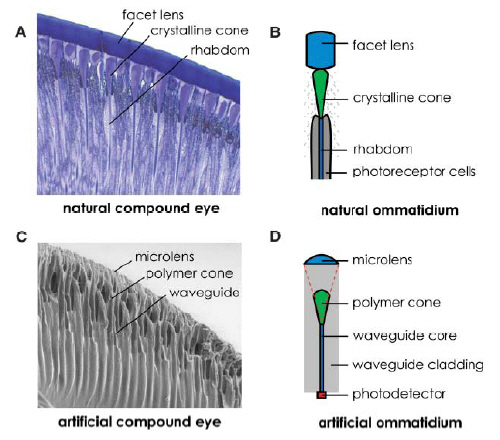| Anatomical comparisons between a natural compound eye and an artificial compound eye.
(A) An optical micrograph of a honeybee's apposition compound eye (courtesy of B. Greiner). As an individual optical unit, (B) a natural ommatidium consists of a facet lens, a crystalline cone, and photoreceptor cells with a wave-guiding rhabdom. (C) A scanning electron micrograph of an artificial compound eye and (D) an artificial ommatidium comprising a microlens, a polymer cone, and an optical waveguide that has a higher index core surrounded by a lower index cladding in a polymer resin. Light impinging onto a microlens is coupled with polymer cones and waveguides and then guided to the end of the waveguide (image courtesy Science). |
